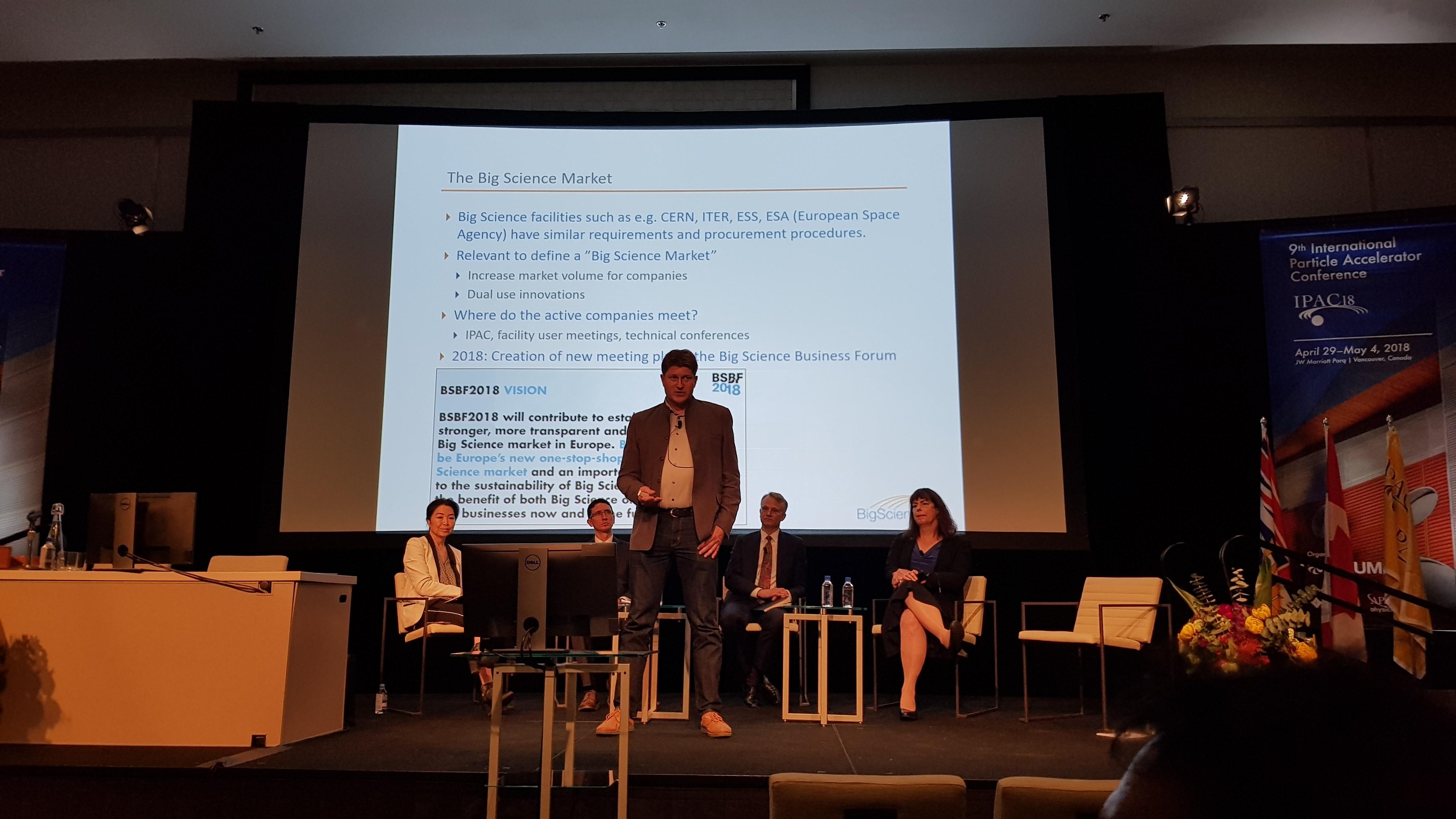International Particle Accelerator Conference 2018 held in Vancouver

BrightnESS delegate Dr. Nikolaj Zangenberg from the Danish Technological Institute furthermore participated in the plenary industry panel debate on the topic of how to move knowledge to commercialization in the particle accelerator community. The panel included Ms. Kathryn Hayashi from Canadian neutron facility TRIUMF (moderator), Dr. Alberto Degiovanni from the medico company ADAM, Morgan Dehnel from Canadian/New Zealand beamline supplier company D-pace, and Dr. Michelle Shinn from the US Department of Energy. All participant gave a short introduction to their approach before the panel discussion and questions from the audience.
Dr. Nikolaj Zangenberg introduced the audience to the European model of national Industrial Liaisons Officers at each facility. Over the last years, the system has seen a development from singular contact points at universities and governments into a more professionalized setup such as the Danish BigScience.dk office that handles the industrial contact for the whole “Big Science market”. Finally, Nikolaj highlighted the huge success of the Big Science Business Forum (BSBF) held in Copenhagen Feb 26-28. This concept of bringing together competent companies, knowledgeable Big Science people and “big wallets” for contracts, in Nikolaj’s conclusions, had created a hotspot for innovation and commercialization activities. This was underlined by the fact that the BSBF participant questionnaire answers revealed an average of 15 established contacts per participant, leading to an estimated total of 7,000 contacts during the event.
ESS played a big role in the organization and allocation of technical staff for the presentations at BSBF. And several industry participants at IPAC applauded the setup since this was really the first ever Big Science market industry event.
The panel discussion on commercialization of innovation included several interesting exchanges. Morgan Dehnel gave the insight that several of the company’s new products had started with random discussions at beamlines at the TRIUMF facility. Also the company prioritized on-going collaborations with facilities and associated universities.
Industry funding was also debated: the US DOE funds companies/start-ups in the nuclear and accelerator field based on innovative products and services with two funding instruments depending on the technology maturity. Also Canada is in the process of setting up a funding scheme dedicated to this area. In Europe, no specific industry funding is dedicated to Big Science, but there is a political focus on harvesting the innovation potential from Big Science facilities.
A final topic related to the role of the Big Science facilities in commercialization. The discussion was framed by the difference between TRIUMF with an 11% annual budget revenue from selling services, and facilities in Europe, that do not rely on the commercial revenue. The dilemma of facilities sometimes competing with private industry was also touched where Nikolaj Zangenberg referenced having experienced both good cases where CERN had developed techniques and then transferred it to companies for series production, but also bad cases where products available from industry was instead developed and produces in-house at the facilities.




 is funded by the European Union Framework Programme for Research and Innovation Horizon 2020, under grant agreement 676548.
is funded by the European Union Framework Programme for Research and Innovation Horizon 2020, under grant agreement 676548.